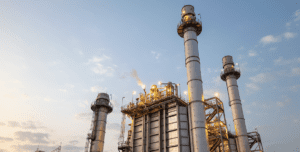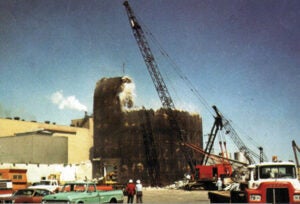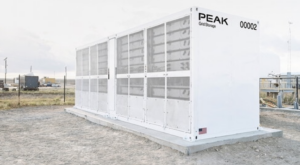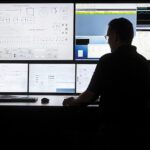As aging infrastructure meets rising demand, hydro plants are embracing modern control systems to unlock data, streamline operations, and power a more resilient, connected future.
Hydro generation has been a critical part of global power infrastructure for a very long time. There are generation sites worldwide that have been in operation for decades, reliably supplying their communities with water management and the renewable energy they need to meet demand. However, times are changing, and meeting modern needs requires different strategies. Today’s most productive hydro sites have discovered that better visibility and control are critical to efficient operation and long-term success.
Modern organizations are moving away from complex webs of interconnected independent controllers toward a boundless automation vision for seamless data mobility across their control architectures. By implementing systems that are seamlessly connected by design, teams can eliminate silos of data and gain greater visibility into what is happening with their operations and maintenance—not only at a single site, but also across a cascade, fleet, or enterprise (Figure 1).

Armed with more data and a better understanding of what is happening across their operations, hydro organizations can start implementing the advanced technologies and decision-making tools that will help them navigate modern challenges and unlock competitive advantage. It all starts with a modern, scalable, fit-for-purpose control system as the foundational element of seamless connectivity.
A Changing Operations and Maintenance Environment
Water may still flow the same way it did decades ago, but the landscape of people, operational strategies, technology, and more required to harness that flow to generate electricity has changed dramatically—particularly in the last five years. Historically, hydro operations have relied on deep stores of institutional knowledge to ensure plants run at peak efficiency. It was not uncommon to find an operator or technician with more than 25 years of experience who could walk around a facility and diagnose asset issues or poor process steps by observing and listening to plant operations.
Today, however, many of the most experienced operators and technicians are retiring in droves and taking their institutional knowledge with them. The people who originally designed the automation systems in hydro facilities are long gone, and those who still deeply understand them are rare and command a premium. In fact, for many facilities, it has not just become difficult to find experienced personnel, but often to find any available workers at all, regardless of experience level. For organizations that have many different facilities as part of their operational structure, this makes it very difficult to adequately staff each one.
Not only are new staff hard to find, but the ones who are hired must be brought up to speed as quickly as possible—a difficult task with fragmented data spread out in silos across aging systems. Modern digitally savvy workers expect intuitive interfaces, easy access to data, and decision support to help them quickly and effectively execute their tasks. A complicated web of independent controllers, strung together with complex, custom engineering, typically limits the ability of plant personnel to implement the modern advanced technologies that can help support and quickly upskill these new digital natives.
A New Way Forward with Boundless Automation
Boundless automation is a new vision for automation infrastructure, grounded in a seamlessly connected architecture as part of automation solution design. Modern, fit-for-purpose hydropower control systems are a critical first step on the boundless automation journey. The most advanced control systems are designed from the ground up with a common data fabric that allows multiple nodes to connect—without the need for custom engineering—out of the box.
Consider the traditional programmable logic controller (PLC) architecture on which most legacy hydropower automation systems are built. Trying to connect one PLC to a second is not a particularly challenging task, especially when both systems are procured as part of the same project. However, over time, as the operations and maintenance teams need more capability, they will also need to add more PLCs. As they do so, they will need to interconnect every new PLC to every existing PLC—managing all the mapping, engineering, communication protocols, and more—ultimately leading to a vast web of different systems, with many connected differently and using a wide array of unique interfaces.
A modern control system, built with a boundless automation vision in mind, eliminates that complexity by its very design. With a seamlessly integrated control system, whether the team is adding the fourth controller or the 28th, the instant the controller is brought online, every other unit can immediately see it and securely communicate with it. This ease of connectivity unlocks scalable data management. Regardless of the number of controllers added, data moves seamlessly among them without any loss of context, building a foundation for better visibility, control, reporting, maintenance, and more.
In addition, this type of seamlessly integrated control system makes it easier to add emerging advanced applications that drive significant increases in performance and efficiency. Newer tools like advanced process control, digital twin simulation, alarm management, and artificial intelligence rely on copious amounts of data. When the underlying automation foundation shares a common data fabric, it becomes far easier to move critical data into those applications to unlock next-generation control (Figure 2).

The Benefits of Boundless Automation-Based Control
Organizations that adopt a seamlessly integrated, fit-for-purpose control system see many improvements in both the operations and maintenance of their hydro assets. With instant access to contextualized, real-time data, teams can both prevent and solve problems faster, as well as more easily adjust operations based on changing conditions.
Standardization Drives Success. One of the primary advantages of a comprehensive, seamlessly integrated hydro control system is the ability to better standardize operations across the entire fleet. For example, one large hydro generator recently modernized its operations to use the same seamlessly integrated modern control system across all its sites. The organization’s goal was to blanket the entire fleet with a common system to provide commonality across dozens of sites. As the project team implemented the new control system, they were able to provide operators and technicians with top-down visibility of what was happening at each site in real-time.
That information is fed back to the central control room, helping the company’s most expert personnel automate and better optimize their water management. The operations team can hold waterway and reservoir levels within tighter ranges, and more easily prevent spills and safety incidents. In the future, they hope to leverage this platform to bring in weather forecast and radar data to better adjust operations to changing conditions. The team can also more easily bring contextualized reliability data into the monitoring and diagnostic center, where personnel can better monitor equipment health and performance, and more easily determine root cause for recurring problems.
Improved Remote Operations. Because skilled personnel come at a premium, many organizations are looking for ways to consolidate talent into a central location for more efficient operations, monitoring, and maintenance of the hydro plants across their fleets. Bringing operations from multiple sites together into one remote operations center, however, is not a task that can be easily accomplished when an organization relies on a web of independent controllers connected via complex custom engineering.
For one hydro power organization that recently undertook the task of bringing its operations together into a remote operations center, the project team knew they needed to connect all their systems to one location in a way that was cost-effective, reliable, and secure. One of the team’s primary goals was eliminating the need for operators at the remote center to log into many different systems to see the data they needed for each site—management wanted them to instead log into one system, which would provide visibility of everything they needed.
By bringing their entire fleet together on a common, seamlessly integrated control platform, the organization provided more uniform and efficient operator screens, better alarm management, and easier control of setpoints across all their plants. Moreover, this common control architecture empowered the project team to easily add plants to the remote center at its own pace, either as part of the original project, or as other stations are brought into the fold in the future. Because the system is built for connectivity, scaling up and out is easy.
Longer Equipment Lifespans. Another decades-old hydro plant struggled with the lifespan of its equipment, concerned that it was running turbines in a way that caused extra wear. The maintenance team was taking the turbines offline periodically and repairing cracks—an expensive endeavor. However, when the organization attempted to identify how it could operate better to reduce wear and tear, stakeholders struggled as they looked at past operations to find correlation between how they ran the units and when problems occurred. The team discovered they had entirely manual records, many of which were incomplete and inconsistent.
Originally the team planned to better instrument their PLC network, but in doing so, they discovered that connecting that instrumentation would be a herculean task. For each instrument they would need to access each controller, create all the mappings, and find ways to bring all that data back to the maintenance and diagnostics center—a task made particularly difficult by the fact that many of the PLCs were of different makes, models, and vintages.
As the team instead implements a seamlessly integrated control system, they will dramatically increase data visibility across all their controllers. The control system is a purposefully designed data fabric, engineered to break down data silos and weave all that data together, making it easy to track, trend, and identify performance and maintenance issues.
Increased Flexibility. A fit-for-purpose control system can also empower operations teams to implement more advanced control strategies to better meet their needs. For example, most plants have multiple turbines. As the plant attempts to meet a specified production level, they need to make critical operational decisions, such as do they run one turbine at 80% load or four units at 20% load each? Optimizing plant operations can even impact maintenance, such as establishing the ability to easily shift work to different assets when one needs repair. A control system not only provides all the contextualized data necessary to make these decisions safely and efficiently, but it can also use priority and balance algorithms to improve decision support for more flexible operation.
Meeting the Future with the Technologies of Today
As demand for more renewable sources of energy increases, so will the pressure on hydropower generators to do more with less. Closing that gap will require providing the right tools to operators and technicians to ensure they can see exactly what is happening across the plant and across the enterprise, empowering them to make better, faster decisions. It all starts with a boundless automation vision for seamless data mobility, which, in turn, starts with a fit-for-purpose hydro control system designed from the ground up for intuitive, secure integration.
—Matt Roberts is director of renewable solutions for Emerson.









